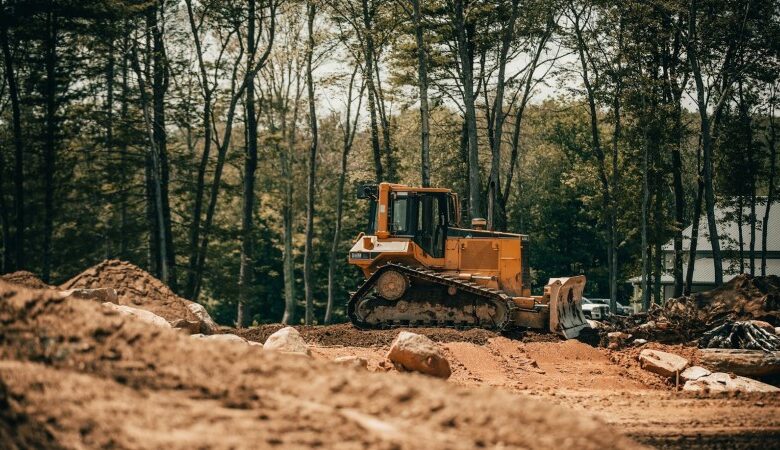Why excavating projects need technological developments

The aftermath of the pandemic affected numerous industries, but mostly construction. Supply chain issues, financing and labour management made construction uncertain, leading to delays and scarcity in real estate.
While solutions exist to revive construction, such as effective communication and optimising disrupted supply chain networks, this industry needs technology the most. With adequate solutions, companies can catch up on the demand by improving efficiency, safety, and productivity.
This applies to all areas of construction, including excavation, which is one of a project’s most important steps. So, let’s examine what technological developments could support the growing efficiency of excavation.
GPS for real-time feedback
GPS (Global Positioning System) allows excavators to dig more efficiently and with angular precision. The guidance supports laser-sharp accuracy, faster completion, and lower costs, so it’s a game changer for workers who manoeuvre excavators.
A GPS is especially important for machinery like a vacuum excavator, which may be challenging to use in hard or rocky soils. GPS can scan the area and help workers adjust their strategy in a timely manner to avoid additional vacuum excavation equipment.
Regardless, GPS is suitable for every type of excavator, as there’s no confusion about the excavation area. In addition, on-site GPS does not require surveyors, so the team can better estimate the workforce needed on the site.
CAD programs for optimising the excavation plan
CAD (Computer Aided Design) programs are usually leveraged along GPS for a 2D and even 3D outlook on the excavation site. Supervisors should use them before starting a new project to better anticipate its timeframe and effort, as the CAD programs also allow the creation of 3D models for construction simulation.
If the project is set in silty or clay soil, the excavation will surely be challenging, but the team can use these technologies to find the best digging strategy. In some cases, excavating in layers can reduce strain on the excavator and get the job done faster.
Of course, choosing a suitable excavator is important. For clay, vacuum excavators can be more efficient, but not more than hydro machinery. Thus, by determining the type of soil you’re working with, you’ll need an adequate excavator solution ― for example, Saugbaggersales UK machinery features advanced suction technology.
Microprocessors for controlled operation speed
Microprocessors attached to excavator machinery can operate individually or with a worker’s help. Computers control these microprocessors and can increase their efficiency by minimising human error. Moreover, they can eliminate risks for workers in challenging terrain and weather conditions.
Microprocessors have various uses, from controlling the excavator’s operation speed to fuel consumption. In addition, they display the vehicle’s information and condition on the monitor screen for better management.
If the excavator is equipped with superior technology, it can gather information about the soil, such as its thickness or type, automatically adjusting its suction or digging method. Features like a ground-penetrating radar offer valuable information for measuring performance.
What are the benefits of smart excavation?
Smart excavation needs more technological involvement to increase construction efficiency. Real-time data and automation allow managers to streamline the workflow and better anticipate the end of a project.
At the same time, the use of technology can considerably reduce human errors, which not only lead to disruptions but also labour costs and accidents. According to the HSE, many fatal accidents in construction are caused by moving objects and vehicles, so by limiting contact with moving machinery, worker protection is ensured.
Finally, smart excavation is more environmentally friendly. Traditional excavation can perturb ecosystems by affecting sedimentation structures and creating a variety of pollutants, so microprocessors and GPS can help prevent that.
Can excavation be more sustainable?
Technology could make excavation more sustainable, but the operation process should be adjusted according to the environment. For example, to avoid land disturbance and preserve topsoil integrity, professionals should limit the amount of grading or filling. This allows the soil to support plant growth following the construction, as it’s not as compacted.
Runoff control is also important to prevent soil erosion and manage water flow. Attaching sediment barriers, silt fences, and sediment ponds ensures fewer chances of contaminating nearby water sources. If the excavation takes place within an urban area, minimising dust is necessary through dust suppression products.
Sustainability is also achieved through recycling resources and reducing waste on-site. Some materials, such as wood or glass, can be reused or recycled, so collecting them after the excavation could have financial benefits.
Is smart excavation challenging to adopt?
Technological advances may be difficult to reach the entire construction industry due to the initial investment. Considering how the lack of financial resources has affected the sector for some time now, upgrading excavation equipment or training employees can be costly. Moreover, managers must work on system interoperability between machinery and software.
The skilled labour shortage is another issue following the pandemic. With an ageing construction workforce and better pay elsewhere, worker retention is more challenging than ever, explaining project delays and the rising construction labour costs.
There’s also the resistance to change, which is present in all global industries. Approaching new technologies and hopping on emerging trends is difficult for entrepreneurs without vision and fear of the unknown, so this sector, too, needs change.
Worker safety is the most important
There are plenty of excavation safety hazards, from collapsing sides to materials falling into workers. That’s why companies must comply with regulations and have structural ramps, high-visibility tests and emergency equipment for workers.
Safety training for excavators is essential. Teams must discuss and understand how access and egress work, how to detect signs of a hazardous atmosphere, and how to protect themselves from water accumulation. Inspection, tests, and planning are non-negotiables at an excavation site.
Final considerations
Excavating projects are essential in the construction industry, but they’re falling behind due to a lack of investment and talented labour. However, with technological advancements like GPS, CAD, and microprocessors, excavating can become more efficient and less prone to human error. At the same time, proper equipment can make it environmentally friendly and safer for workers.
